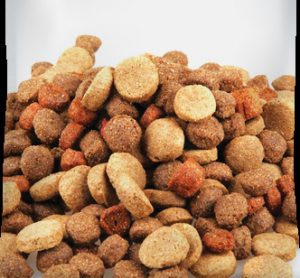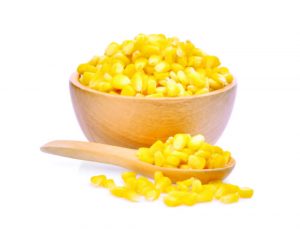There are many pet nutritional myths that mislead the public, who therefore miss out on optimizing their pet’s health. These misleading myths—often mistaken for “common wisdom—often have promise-laden claims that are pervasive and without basis. They also mislead by making you think it’s all right to allow your pets to consume foodstuff that might even do more harm than good.
Initially, evidence-based medicine (EBM) was defined as the “conscientious, explicit and judicious use of current best evidence from clinical care research in making decisions about the care of individual patients.” The emphasis is on clinical and empirical. That’s what we’ll be using to debunk these dangerous myths.
Protein Myths
MYTH: High Protein = Quality Nutrition?
NOT REALLY. Essential amino acids versus non-essential amino acids are the key to understanding this.
Amino acids are the basic unit of protein composition. Animals do not have a requirement for protein itself but they do need essential amino acids that their bodies cannot create. These, therefore, must be supplied by their food. Therefore, the amino acid requirement is dependent on factors such as growth, pregnancy, lactation, and some disease conditions.

(THINK ABOUT IT: If the pet dog is no longer in the exponential growth phase, why give it staggering amounts of protein?)
MYTH: There are breed-specific types of feed
WRONG! Most pet foods have whole protein as a component and not individual amino acids. It is impossible to know what amino acid is necessary at any given time for any given breed type.
Therefore out of practicality, it is fair to consider a protein requirement need than insist on a specific essential amino acid needed. This claim is irrelevant to our recent knowledge of genetics. We are not there yet, simply put. To insist that there is a specific, genetically identified inheritance pattern that is species-specific, directly affected by the input of certain pet foods, is close to medical, biological, or at worst, nutritional fraud.

If those who read this article disagree with me, it’s fine for so long as they can produce peer-reviewed, evidence-based articles, or a textbook to finally address the issue based solely of course on genetic studies and not just mere clinical trials that prove only the marketability of a particular product.
In dietary protein quality evaluation, dietary amino acids should be treated as individual nutrients, and wherever possible, data for digestible or bioavailable amino acids should be given in food tables on an individual amino acid basis.
Therefore, to consider all amino acids as equal in nature, function, and effect is too simple and might not be compatible with what is accepted as nutrition science.
MYTH: All protein sources are good for animals
THE ANSWER TO THIS IS A BIT COMPLEX. From the human medical point of view, the following are shown to be quality protein sources: beef, milk, yogurt, pork, eggs, cheese, fish, and poultry are complete high-quality proteins that are highly digestible and contain all the essential amino acids your body needs to build and maintain muscle mass and manage weight, sarcopenia (loss of muscle tissue), osteoporosis (loss of bone mass)/osteopenia (loss of bone cells), and cardiovascular disease.
So which proteins are the major source of nitrogen in food? What criteria can we use in evaluating animal food for dogs and cats?

First, there is biological value (BV). This is a measure of the proportion of absorbed protein from a food which becomes incorporated into the proteins of an organism’s body. It captures how readily the digested protein can be used in protein synthesis in the cells of the organism. When a protein contains the essential amino acids in the right proportions required by humans, we say that it has high biological value.
Then there is digestibility. For protein, an important question is quality versus quantity. There are required amino acids; the amino acid composition and digestibility of protein are important considerations. In other words, the quality of a protein determines the quantity of recommended intake.
Various attempts have been made to express the “quality” or “value” of various kinds of protein. Measures include the biological data, net protein utilization, protein efficiency ratio, protein digestibility-corrected amino acid score, and complete proteins concept.
These concepts are important in the livestock industry, because the relative lack of one or more of the essential amino acids in animal feeds would have a limiting effect on growth and thus on feed conversion ratio.
Thus, various feedstuffs may be fed in combinations to increase net protein utilization, or a supplement of an individual amino acid (methionine, lysine, threonine, or tryptophan) can be added to the feed.
This is the real issue and not percent dry matter protein content.
MYTH: Corn is a filler.
DEFINITELY INCORRECT. A “filler” is defined as any excipient material used in feedstuff that has no nutritional value.

Corn has carbohydrates, protein, fatty acids, and antioxidants. It has a well-rounded nutritional package. Corn is easily digestible and is relatively safe compared to other carbohydrate sources. Yet it is not a common source of protein.
MYTH: There is hypoallergenic pet food
LOOKS LIKE A MARKET-DRIVEN MYTH. It comes as no surprise that upon the introduction of novel sources of carbohydrates, the whole dog food industry latched onto another game-changing trend. It seemed everyone jumped on the bandwagon. The market was abuzz with every conceivable combination of phrases that revolved around the idea of “hypoallergenic food ingredients.”

The truth is, while people are often quick to blame a dog’s skin problems on what it eats, Tufts University’s Cummings Veterinary Center says that food allergies in dogs are not all that common. There you go.
MYTH: Food allergies and food intolerance are the same.
THESE CONCEPTS ARE NOT ONE AND THE SAME. A good example is lactose intolerance, which is due to a deficiency of lactase, an enzyme used to break down milk sugars. In food intolerance, the common manifestation is diarrhea and vomiting. An allergy, on the other hand, is an over-reactive response by the body’s immune defenses. When your dog comes into contact with something it’s allergic to, Hillspet.com says “…its immune system goes into overdrive. attacking the allergen, resulting in skin problems, itching, or hair loss.”

This is when your dog is suffering from adverse reactions. If it is suffering from a food intolerance rather than a food allergy, then hypoallergenic dog food will not be able to help. We recommend seeing your veterinarian to get the best possible solution for your pet.
This appeared in Animal Scene magazine’s May 2018 issue.






